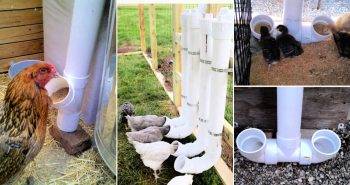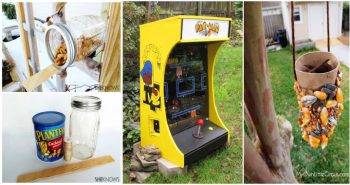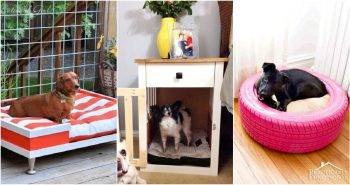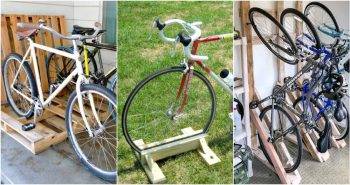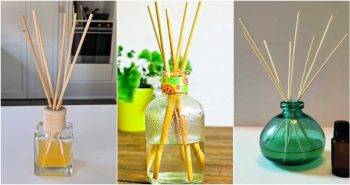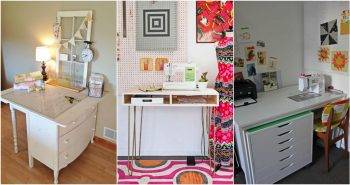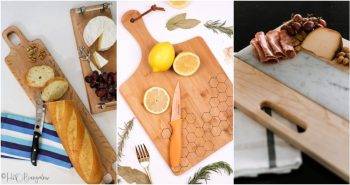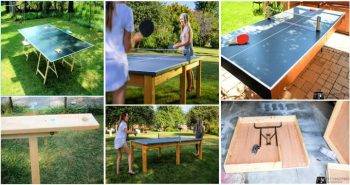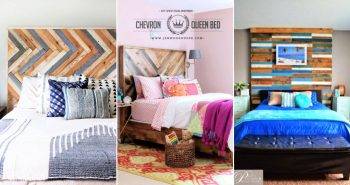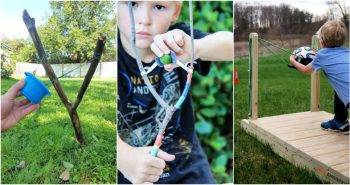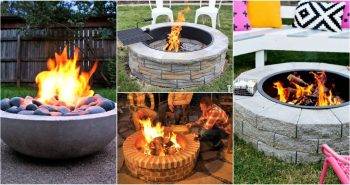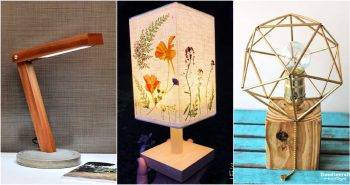Making a DIY bird feeder is a rewarding project that merges creativity with nature conservation. By designing your own, you not only get the chance to craft a unique piece but also contribute to the well-being of your local bird population. This guide is tailored to help you understand the basics of making a bird feeder, covering everything from the necessary materials to a step-by-step approach for construction.
Diving into 30 homemade DIY bird feeder ideas offers an opportunity to explore various designs and methods, ensuring you can find a perfect match for your outdoor space. As we guide you through how to make bird feeders, you'll gain valuable insights into ensuring they are safe and appealing to our feathered friends. Get ready to enhance your garden or balcony with a handmade addition that promises to attract a diverse array of birds. Continue reading for a detailed walkthrough on embarking on this creative venture.
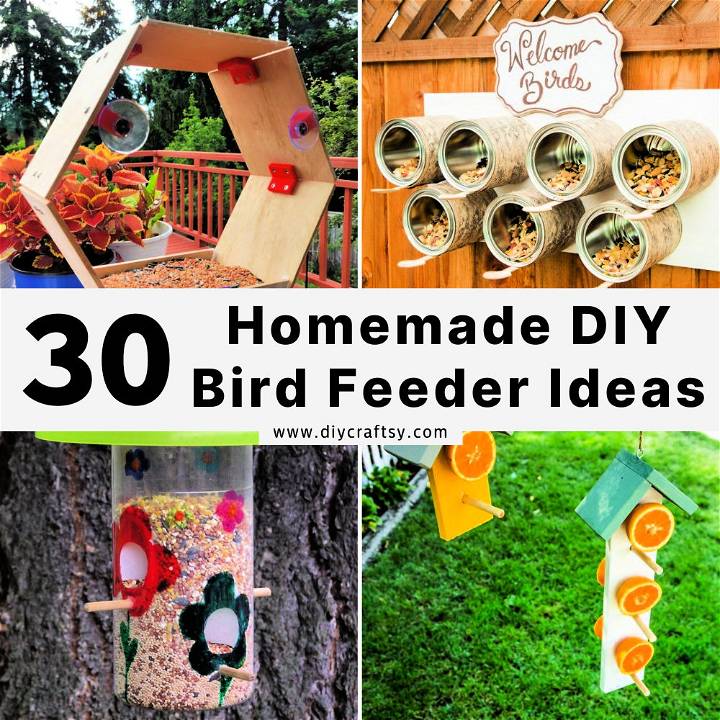
Why Make Your Own Bird Feeder?
Building a bird feeder at home is not just a fulfilling DIY project but also brings several benefits to your garden and the environment. Here's why you should consider making one:
- Support Wildlife: Homemade bird feeders provide essential nourishment to birds, especially during the colder months when food is scarce. By offering a steady food source, you're helping local bird populations thrive.
- Eco-Friendly: Utilizing recycled materials for your bird feeder project reduces waste. Repurposing items like milk cartons, wine bottles, or scrap wood into bird feeders is a fantastic way to be environmentally responsible while crafting something useful.
- Educational Value: Building a bird feeder is an excellent hands-on learning opportunity for children and adults alike. It teaches about the importance of caring for nature, bird species, and the ecosystem. Observing the birds can also spark interest in wildlife and conservation efforts.
- Enhances Garden Aesthetics: A well-crafted bird feeder is not only functional but also adds charm and character to your garden. It can serve as a focal point that attracts various bird species, making a lively and colorful outdoor space.
- Promotes Relaxation: Watching birds visit your feeder can be incredibly soothing and a form of stress relief. The sight and sounds of birds can make a serene atmosphere in your backyard, offering a peaceful escape from the hustle and bustle of daily life.
Making your own bird feeder is a simple, rewarding, and impactful way to connect with nature, support local wildlife, and add beauty to your outdoor environment.
How to Make a Bird Feeder
Making a bird feeder from a plastic bottle is not only a fun DIY project but also a great way to recycle and help our feathered friends. This guide will walk you through a simple process to build a bird feeder using items you likely have at home. Let's dive in!
What You Will Need
Materials:
- A clean, dry plastic bottle with a cap
- Twine or string
- Two sticks, dowel rods, or pencils
- Birdseed
Tools:
- A drawing pin (thumbtack)
- A sharp pair of scissors (nail scissors work great)
Step-by-Step Guide
1. Preparing the Perches:
- Use the drawing pin to carefully make two holes opposite each other towards the bottom of the bottle.
- With the scissors, widen these holes until they're just slightly smaller than the width of your chosen stick.
- Insert the stick through both holes to make a perch. Repeat this step higher up on the bottle, ensuring the second perch is at a 90-degree angle to the first, forming a cross shape when viewed from below.
2. Building Drainage and Feeding Holes:
- To avoid water accumulation inside the feeder, make some drainage holes at the bottom using the drawing pin and scissors.
- For the feeding holes, poke slight holes with the drawing pin about four centimeters above each perch and widen them with scissors. These should be around 7-8 millimeters wide, adjustable based on the size of your birdseed.
3. Preparing for Hanging:
- Near the neck of the bottle, make two more holes opposite one another.
- Thread a piece of twine or string through these holes, making a loop to hang the feeder.
4. Filling and Sealing:
- Fill the bottle with birdseed. Ensure the feeding holes are sized so seeds can be accessed by the birds but won't spill out en masse.
- Screw the cap back on, and your bird feeder is ready to be hung in a tree, on a washing line, or any suitable spot.
After Installation:
Once installed, it may take a day or two for birds to start visiting your new feeder. Be patient, as our little friends need time to discover this new source of food.
Video Tutorial
For a step-by-step video tutorial on making a bird feeder from a plastic bottle, watch this EcoSapien video.
It pairs well with this written guide, offering an enriched, visual representation of each step laid out here, making it easier for visual learners to follow along.
Crafting a bird feeder from a plastic bottle is an enjoyable and eco-friendly project suitable for all ages. Not only will you reuse an everyday item, but you'll also provide a valuable resource for local wildlife.
Understanding Your Local Bird Species
Attracting birds native to your area not only adds a dash of vibrant life and song to your backyard but also contributes to the local ecosystem's health. Whether you're an avid bird watcher or simply enjoy the company of these feathered friends, understanding which species you can attract—and how—is the first step in making a welcoming environment for them.
Mini-Guide to Common Backyard Birds in Different Regions
While a comprehensive list of birds for each region would be vast, identifying a few common visitors can help you start. For a more detailed exploration, websites like the Audubon Society and the Cornell Lab of Ornithology are treasure troves of information, offering guides and tools to identify and understand the birds in your locale.
- North America: Common backyard birds include the Northern Cardinal, American Robin, and Blue Jay.
- Europe: Look out for the European Robin, Great Tit, and Chaffinch.
- Australia: Common sightings include the Australian Magpie, Rainbow Lorikeet, and Superb Fairy-wren.
By visiting these resources, you can discover not just the birds of your region but also their habits, preferences, and how to attract them.
Bird Feeder Types and Food Choices
The types of feeders and food you choose play a significant role in determining which birds pay you a visit. Here’s a simple guide to get you started:
- Tube Feeders: Perfect for small birds like finches and sparrows, filled with sunflower seeds or thistle.
- Hopper Feeders: Attract a wide variety of birds including cardinals and blue jays, suitable for mixed seeds.
- Suet Feeders: Ideal during winter, attracting woodpeckers, nuthatches, and titmice with their fat-rich content.
- Platform Feeders: Open and accessible, they attract ground-feeding birds like doves and juncos with mixed seeds or corn.
Choosing the right food is just as crucial:
- Sunflower Seeds: A universal favorite among many bird species.
- Suet: Provides essential fats, especially beneficial in colder climates.
- Nectar: Attracts hummingbirds and orioles, made from a simple sugar-water mixture.
- Fruits and Nuts: Loved by a variety of birds, including blue jays, woodpeckers, and robins.
Remember, the key to a successful bird feeder is not just about attracting birds, but also about providing a safe and nutritious environment for them. Regularly cleaning your feeders and providing fresh water are just as important as the feed itself.
By understanding the specific preferences of your local bird species, and matching those with the appropriate feeders and food, you're well on your way to becoming a beloved stopover for the feathered residents of your area. Enjoy the flurry of activity and song they bring to your backyard!
The Perfect Placement: Location, Location, Location
Safety First: Keeping Our Feathered Friends Safe
When deciding where to place your homamde bird feeder, the safety of the birds should be your top priority. Positioning feeders away from windows can significantly reduce the risk of birds colliding with glass, a common cause of injury or death among birds. It's also crucial to consider potential predators, including cats and birds of prey. Placing feeders at least 12 feet away from places where predators can hide, such as bushes or trees, gives birds a chance to spot danger and flee.
Maximizing Bird Viewing Pleasure
To fully enjoy the beauty and antics of your visiting birds, place feeders where they can easily be seen from your favorite indoor spots. Near patios, gardens, or windows (with safety measures to prevent collisions) are ideal spots. However, ensure feeders are close enough to windows for viewing pleasure but positioned in a way that minimizes reflection and risk to birds.
Balancing Sunlight, Trees, and Cover
- Sunlight: Position your feeder in a spot that receives a moderate amount of sunlight throughout the day. Too much direct sunlight can spoil the birdseed quickly, while too little might make the area less attractive to birds.
- Trees and Cover: Birds need to feel safe when they feed. Placing feeders near trees or shrubs offers quick cover for birds to flee to if they sense danger. However, feeders shouldn’t be so close that squirrels or other predators can easily jump onto them. A good rule of thumb is to place feeders about 10 feet away from trees or structures.
- Proximity to the House: For those who enjoy watching birds from indoors, placing feeders closer to the house can be delightful. Just be mindful of the risk of window strikes and take measures to make windows more visible to birds, using decals or screens, for instance.
Selecting the right location for your homemade bird feeder can enhance the birdwatching experience for you while ensuring a safe feeding environment for birds.
By considering safety, visibility, and environmental factors, you can enjoy the company of birds year-round, right in your backyard.
DIY Bird Feeder Maintenance: A Clean Feeder is a Happy Feeder
Keeping your bird feeder clean is not just about aesthetics; it's essential for the health and safety of the birds visiting your garden. A clean feeder prevents the spread of diseases, discourages pests, and ensures that the food remains fresh and appealing to birds. Let's explore the importance of cleaning, simple solutions for maintenance, and how to tackle mold or spoiling food.
Why Cleaning Feeders Is Crucial for Bird Health
Birds, like any other creatures, are vulnerable to diseases. Feeders can quickly become breeding grounds for bacteria, mold, and yeast if not cleaned regularly, leading to the spread of diseases among the bird population. Moreover, dirty feeders can attract rodents and other unwanted pests, posing additional risks to birds and even to your property.
Simple Cleaning Solutions and How Often to Clean
- Routine Cleaning: Ideally, bird feeders should be cleaned thoroughly at least once every two weeks. However, if you notice the feeder getting dirty more quickly, increase the frequency of cleaning. Use a solution of one part bleach to nine parts water to disinfect the feeder. Rinse thoroughly after cleaning to ensure no bleach residue remains.
- Deep Cleaning: Every month or so, consider giving your feeder a deep clean. This involves taking the feeder apart as much as possible and soaking the parts in the cleaning solution. Use a brush to scrub away any residues, focusing on crevices where mold and dirt might accumulate.
Dealing with Mold or Spoiling Food
- Prevent Mold: The best way to deal with mold is to prevent it from happening in the first place. Ensure that the seeds stay dry in the feeder. If you live in a particularly humid area or are experiencing a lot of rain, consider using a feeder with a good drainage system or sheltering your feeder from the rain.
- Addressing Spoiled Food: If you notice that the food in the feeder has gone bad or is moldy, it's time for an immediate cleanup. Dispose of all the spoiled food, and clean the feeder using the methods mentioned above. After cleaning, let the feeder dry completely before refilling it with fresh seeds.
- Regular Inspection: Make it a habit to inspect the feeder every time you refill it. Look for signs of mold, dampness, or spoilage, and clean the feeder immediately if necessary.
By incorporating these simple cleaning routines, you can enjoy the beauty of birds in your garden without inadvertently harming them.
Beyond Seed: Other Food Sources for Birds
Feeding birds is a delightful hobby that connects us with nature and helps support our feathered friends. However, bird feeding goes beyond just offering seeds. By diversifying the food sources, you can attract a wider variety of birds and meet their nutritional needs throughout the seasons. Let's explore some alternative food options and their benefits.
Suet Cakes
Suet cakes are a high-energy food made from animal fat. They are especially beneficial in winter when birds need extra calories to maintain their body heat.
- Attracts: Woodpeckers, nuthatches, and chickadees love suet cakes.
- Safety: Ensure the suet is fresh to avoid rancidity. In warmer climates, consider using no-melt suet cakes to prevent spoiling.
Fruits
Fresh or dried fruits can be a sweet treat for many birds. They provide essential vitamins and a change in diet.
- Attracts: Orioles, tanagers, and robins are particularly fond of fruit offerings.
- Safety: Avoid offering fruits with added sugars or preservatives. Replace uneaten fruits to prevent attracting pests.
Mealworms
Mealworms, whether live or dried, are an excellent protein source. They're especially loved during the breeding season when birds need extra protein.
- Attracts: Bluebirds, wrens, and thrushes are among the species that enjoy mealworms.
- Safety: Offer mealworms in a feeder that prevents them from escaping and ensures they are sourced from a reliable supplier to avoid the spread of diseases.
Nectar
Homemade or store-bought nectar can attract hummingbirds and some types of orioles to your yard.
- Attracts: Primarily hummingbirds, but orioles and other nectar-loving birds may also visit.
- Safety: Use a 4:1 water to sugar ratio for homemade nectar, avoid red dyes, and clean nectar feeders regularly to prevent mold growth.
Safety Considerations for Offering Alternatives
While offering a variety of foods can enrich the diet of backyard birds, safety should always be a priority. Here are a few considerations:
- Freshness: Always ensure that the food you offer is fresh and free from mold or spoilage.
- Placement: Position feeders in safe locations, away from predators and in a place where birds have a clear view of their surroundings.
- Hygiene: Regularly clean feeders and feeding areas to prevent the spread of diseases among bird populations.
By offering these alternative food sources, you not only enjoy the presence of a diverse array of bird species but also contribute to their well-being.
Making a Bird-Friendly Yard
Making a bird-friendly yard is a rewarding way to enjoy nature while helping our feathered friends. It's more than just about hanging a bird feeder; it involves making a habitat that supports birds throughout the year. Let's explore how you can transform your yard into a bird paradise.
Bird Feeders: Just the Beginning
Bird feeders are a great start, but they're only one part of the equation. Different birds are attracted to different types of feeders and food, so offering a variety can help attract a diverse bird population. Here are some tips:
- Place feeders strategically around your yard to provide safe eating spots away from predators.
- Clean feeders regularly to prevent the spread of disease among bird populations.
- Offer a variety of food such as seeds, nuts, and suet to attract different types of birds.
The Power of Native Plants
Native plants are essential in providing birds with food, shelter, and nesting sites. They're adapted to your local climate and soil, making them easier to care for than non-native species. Plus, they help support local wildlife, including birds, bees, and butterflies. Consider these tips:
- Choose native plants that produce seeds, nuts, berries, or nectar to feed birds throughout the year.
- Plant in layers from tall trees to short ground covers to mimic natural habitats and provide shelter and nesting sites.
Water Sources: A Vital Element
Birds need water for drinking and bathing, making water sources a critical component of a bird-friendly yard. A simple birdbath can attract birds that might not visit feeders. Here are some suggestions:
- Keep water fresh by refilling and cleaning birdbaths regularly.
- Consider a fountain or drip system to provide moving water, which is particularly attractive to birds.
- Place water sources at different levels to accommodate different bird species.
By taking these steps, you can make a haven for birds right in your backyard, contributing to the conservation of bird species and enjoying the beauty and diversity of bird life all year round.
DIY Bird Feeders: A Guide to Bringing Feathered Friends to Your Garden
Creating your own bird feeders is not just a rewarding DIY project, but also an excellent way to connect with nature right from your backyard or balcony. Here’s how to get started and troubleshoot common bird feeder problems.
Troubleshooting Common Bird Feeder Problems
Feeder Not Getting Visitors?
- Location, Location, Location: Birds need to feel safe. Ensure your feeder is placed away from predators but close enough to shelter like bushes or trees.
- Variety of Food: Different birds have different preferences. Try a mix of seeds, nuts, and fruits to attract a wider variety.
- Patience is Key: Sometimes, it just takes time. Birds are creatures of habit and it might take them a few days to notice the new food source.
Dealing with Squirrels
- Baffle Them: A baffle is a smooth, slippery surface that squirrels can’t climb. Placing one above or below your feeder can keep them at bay.
- Spicy Solution: Birds can’t taste capsaicin (the hot in chili peppers), but squirrels can. Mixing some chili powder into your birdseed can deter squirrels without affecting the birds.
- Location Strategy: Keep your feeder far from jump-off points. Squirrels can leap long distances, so place feeders away from trees, fences, and buildings.
Making Your Bird Feeder a Success
- Regular Cleaning: Keep your feeder clean to prevent diseases among bird populations. A quick wash and dry every two weeks is a good rule of thumb.
- Water Source: Adding a water bath near your feeder can attract more birds. Like all creatures, birds need water for drinking and bathing.
- Keep It Full: Consistency is crucial. Keep your feeder stocked to encourage birds to keep coming back.
By addressing these common issues, you’ll enhance your bird-watching experience and ensure a bustling hub of bird activity in your outdoor space.
FAQS on Homemade DIY Bird Feeder Ideas
Building your own bird feeder can be a fun and rewarding project. Here are some frequently asked questions to help you get started on making a welcoming space for birds in your garden.
What materials can I use to make a DIY bird feeder?
You can use a variety of materials to make a bird feeder. Common items include:
- Recycled materials like plastic bottles, milk cartons, and tin cans
- Natural materials such as pine cones, logs, or bamboo
- Wood scraps or untreated lumber for a more durable feeder
- Old dishes, cups, or wine bottles for a creative touch
How can I ensure my bird feeder is safe for birds?
To make sure your bird feeder is safe:
- Avoid sharp edges or points that could harm the birds
- Ensure the feeder is sturdy and won't fall under the weight of birds or food
- Use eco-friendly, non-toxic paints or finishes
- Keep the feeder clean to prevent the spread of diseases among birds
What type of food should I put in my bird feeder?
The type of food you should put in your bird feeder depends on the birds you wish to attract. Common options include:
- Black oil sunflower seeds for a wide variety of birds
- Nyjer seeds for finches
- Suet for woodpeckers, nuthatches, and titmice
- Peanuts or peanut butter for larger birds and woodpeckers
- Mixed seed blends for ground-feeding birds like doves and sparrows
How do I keep squirrels away from my bird feeder?
Keeping squirrels away can be challenging, but here are a few strategies:
- Use a squirrel-proof bird feeder design or add a baffle to existing feeders
- Place your feeder away from trees and structures squirrels can jump from
- Offer foods that squirrels don't prefer, like safflower seeds or nyjer seeds
- Use a separate squirrel feeder to distract them from your bird feeder
How often should I clean my bird feeder?
It's recommended to clean your bird feeder every two weeks to prevent the spread of diseases. If you notice any moldy seeds or sick birds, clean the feeder immediately. Use a solution of one part bleach to nine parts water, rinse thoroughly, and let the feeder dry completely before refilling.
Can I make a bird feeder if I live in an apartment?
Yes, you can make a bird feeder even if you live in an apartment. Window feeders, balcony rail feeders, or hanging feeders that can attach to outside walls are great options for apartment dwellers. Just make sure to place the feeder where it's safe for birds to access and where you can enjoy watching them.
What should I do if birds aren't using my DIY bird feeder?
If birds aren't visiting your feeder, consider the following:
- Ensure the feeder is in a safe, accessible location, away from predators
- Be patient, as it may take time for birds to discover the feeder
- Try different types of food to attract a variety of birds
- Keep the feeder clean and well-stocked
Building a DIY bird feeder is not only a way to enjoy wildlife but also an opportunity to support bird populations. With these FAQs, you're well-equipped to start your bird feeder project.
30 Homemade DIY Bird Feeder Ideas (How to Make Bird Feeders)
Discover 30 creative homemade DIY bird feeder ideas in this comprehensive guide. Learn how to make bird feeders for your feathered friends today!
1. How to Make a Recycled Bird Feeder
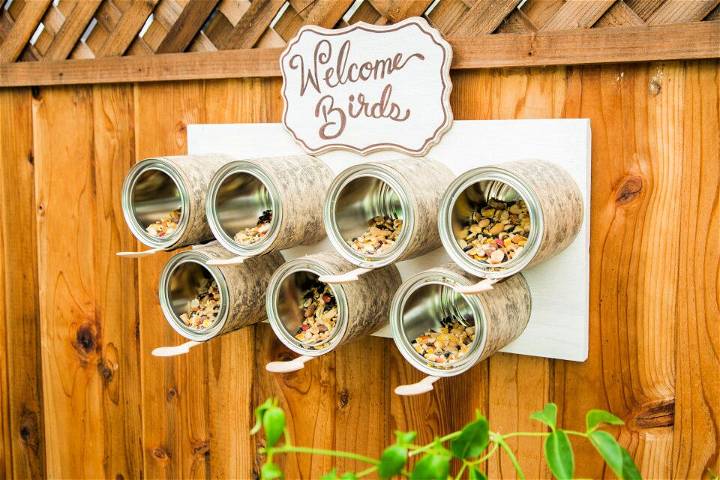
Provide a comfortable and safe habitat for your birds with a DIY recycled bird feeder, using materials you already have at home! With a few tin cans, a wooden spoon, some rope, and a bit of creativity, you can build a charming spot for birds to visit.
Paige Hemmis guides you through each step, from preparing the cans to assembling the feeder, ensuring you make a safe and inviting space for birds. For a detailed guide, visit Hallmark Channel. This easy project not only recycles but also adds a touch of nature-friendly charm to your outdoor space.
2. Make a Bird Feeder Using Recycle Materials
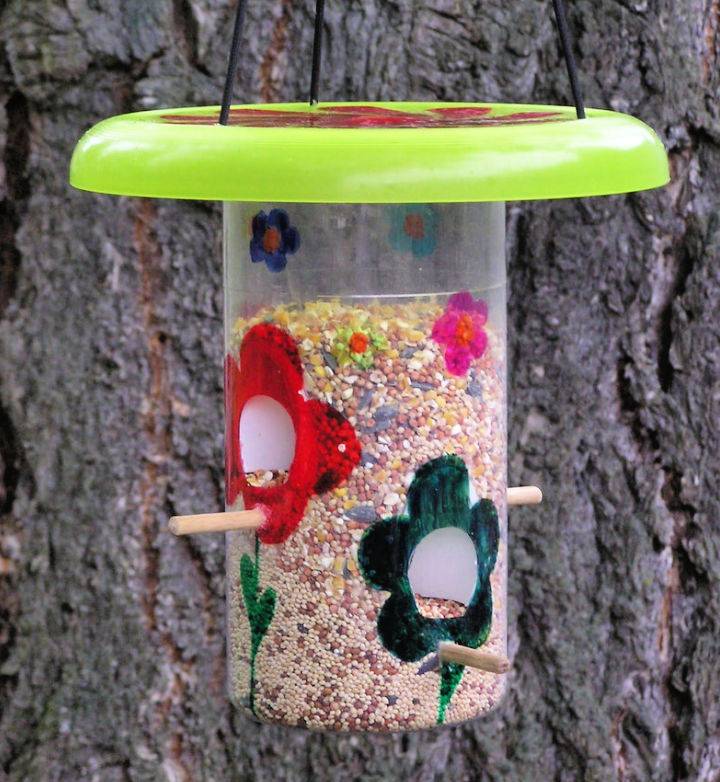
Learn how to create homemade bird feeders with easy, eco-friendly designs perfect for all bird types. Nurture a love for nature right in your backyard with an easy-to-make DIY bird feeder guided by detailed instructions available on Instructables. Perfect for outdoor enthusiasts or anyone looking to add a bit of wildlife to their view, this DIY project is straightforward and fulfilling. You'll learn how to craft a feeder that not only attracts feathered friends but also withstands the elements, ensuring your garden is a popular stopover for birds season after season.
3. How to Build a Wood Bird Feeder
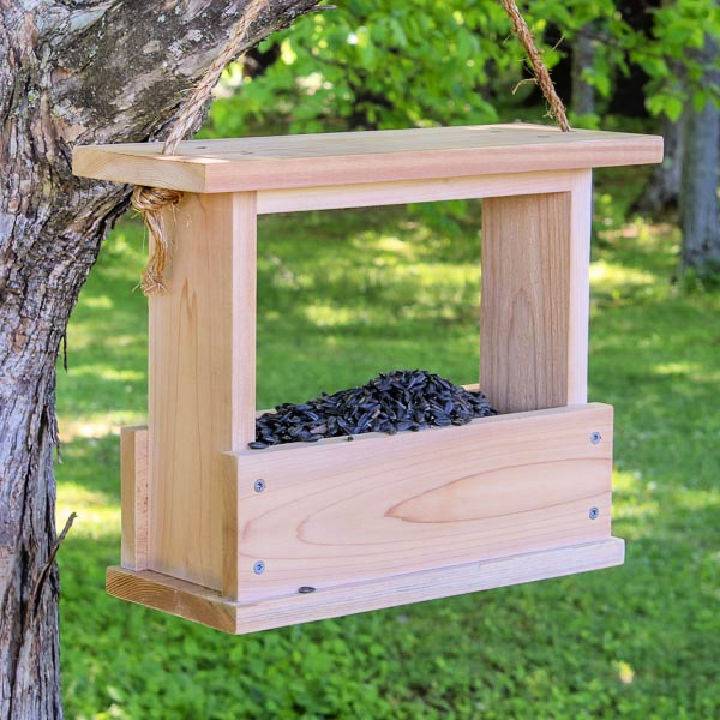
Increase the aesthetics of your garden with a homemade bird feeder made by you from Saws on Skates* ®. This project is wonderfully straightforward, making it perfect for both adults and kids to enjoy crafting together. Utilizing basic woodworking tools, you can assemble this charming bird feeder in just one afternoon.
Not only does it serve as a delightful addition to any outdoor space, inviting a flurry of feathered friends, but it also stands as a heartfelt gift for any occasion. Complete with a rustic rope hanger, its design enhances backyard aesthetics while feeding the birds. Secure the free plan today and start making a welcoming spot for nature's melodious visitors.
4. Creative Bird Feeder Using Fruit
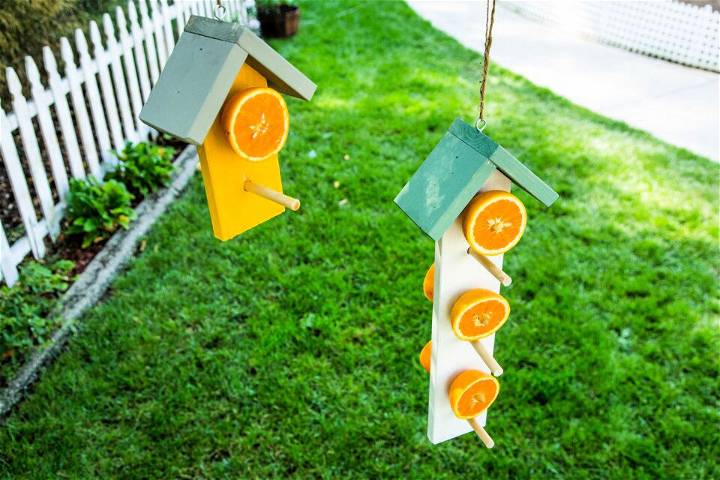
Get closer to nature by bringing it into your home by crafting a unique DIY fruit bird feeder with guidance from Ken Wingard. This engaging project involves simple materials such as wood, dowels, wood glue, and paint.
Begin by shaping wood into a sturdy frame and roof. Next, drill holes to insert dowels for fruit placement. Finalize your creation with a splash of paint for a personal touch. Perfect for attracting colorful visitors to your garden! For a step-by-step guide, visit Hallmark Channel.
5. Making a Bird Feeder Out of Scrap Wood
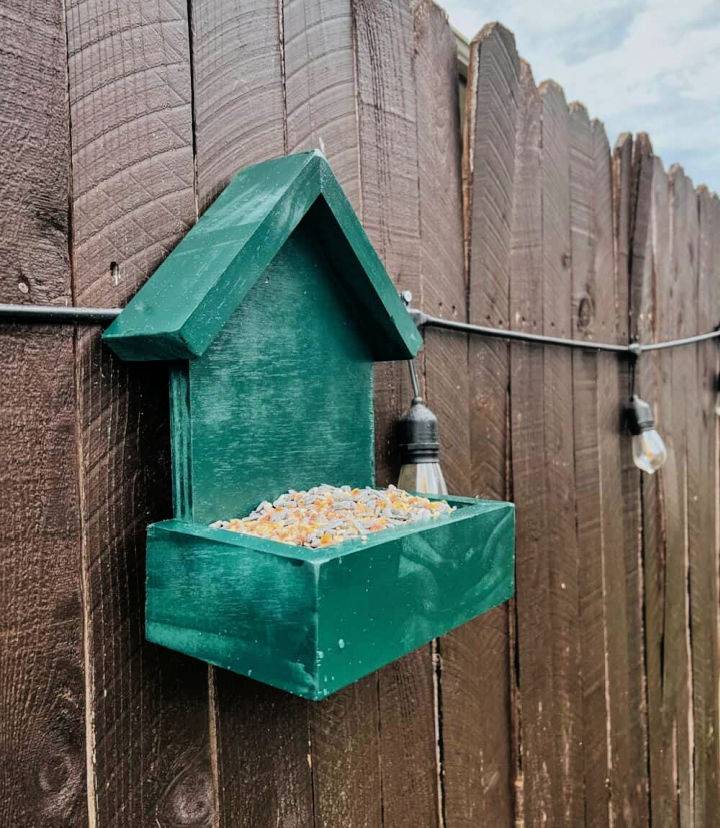
Discover innovative DIY bird feeder ideas to attract more birds to your garden this season! Turn those scraps of wood into a charming DIY bird feeder, a project perfect for utilizing scrap wood. Love & Renovations guides you through an easy-to-follow tutorial that transforms unused wood into a charming refuge for birds.
In no time and with minimal effort, you'll craft a feeder that not only decorates your outdoor space but also invites nature closer to home. This project is not only a delightful way to recycle materials but also a wonderful activity for family bonding. Get ready to enhance your garden's appeal and enjoy the company of birds with this simple, cost-effective DIY endeavor.
6. Free Window Bird Feeder Plan
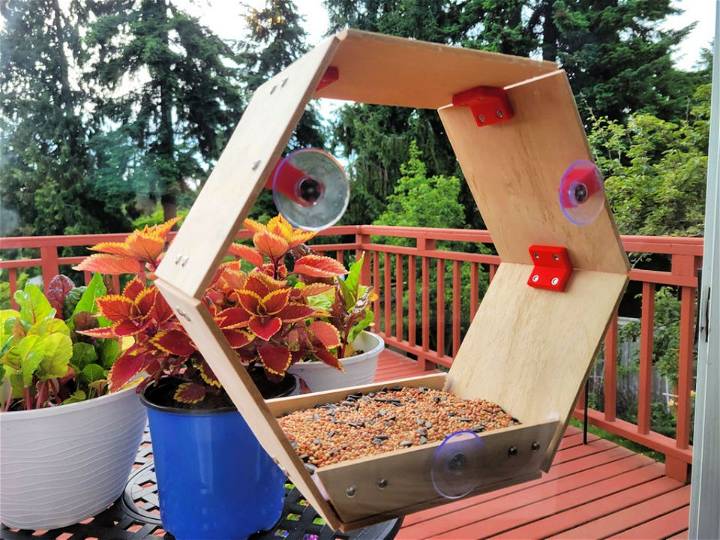
Get the beauty of birdwatching right to your window! This Instructables guide walks you through making a customizable window bird feeder. Whether you want to enlarge the feeding area or add a personal touch, this design is adaptable to your desires. Attach it with ease using suction cups for a clear view of feathered friends visiting your space.
Ideal for adding a wireless camera, this feeder not only attracts birds but also caters to your bird-watching experience from the comfort of your home. Follow simple steps with materials like plywood, screws, and optional 3D-printed brackets. Happy crafting and birdwatching!
7. Handmade Bird Feeder in a Coffee Mug
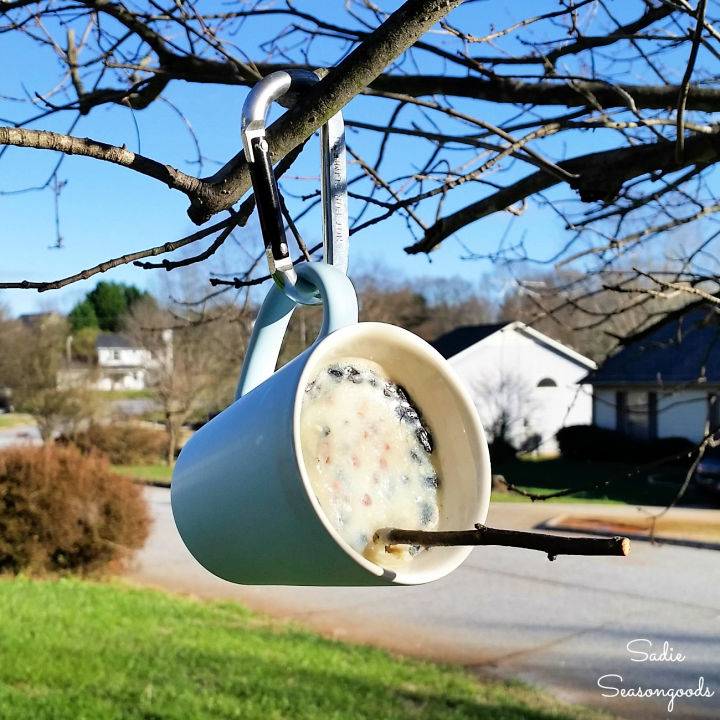
Change your morning coffee ritual into a feast for feathered friends with a DIY suet feeder crafted from a thrifted coffee mug. This inventive and eco-friendly project is delightfully detailed at Sadie Seasongoods. Begin by choosing a ceramic mug, ensuring it's clean before proceeding. Homemade bird suet, maked from rendered beef fat mixed with birdseed, fills the mug.
Insert crafted perches for the birds to land, then cool until set. Hanging your unique suet feeder outdoors invites birds to dine in style. This project is perfect for upcycling enthusiasts and nature lovers alike, adding a charming and practical touch to your garden or yard.
8. How to Make Your Own Bird Feeder
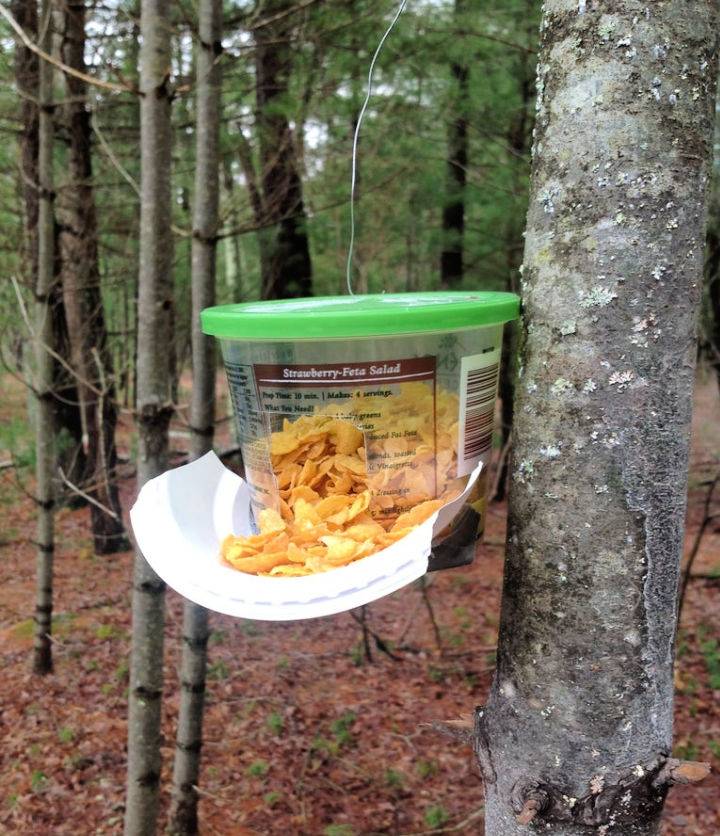
Make your garden a bird paradise with these simple DIY bird feeders plans anyone can follow. Learn how to make a welcoming haven for birds in your backyard with a DIY bird feeder. This engaging project is outlined in simple steps at Instructables. It guides you through building a feeder that not only attracts birds but also adds charm to your outdoor space.
Crafting this bird feeder is an easy, fulfilling activity, promising delightful birdwatching opportunities right from the comfort of your home. Perfect for nature lovers and DIY enthusiasts alike, this tutorial is your gateway to a vibrant, feathered sanctuary.
9. Hanging Teacup Bird Feeder in the Garden
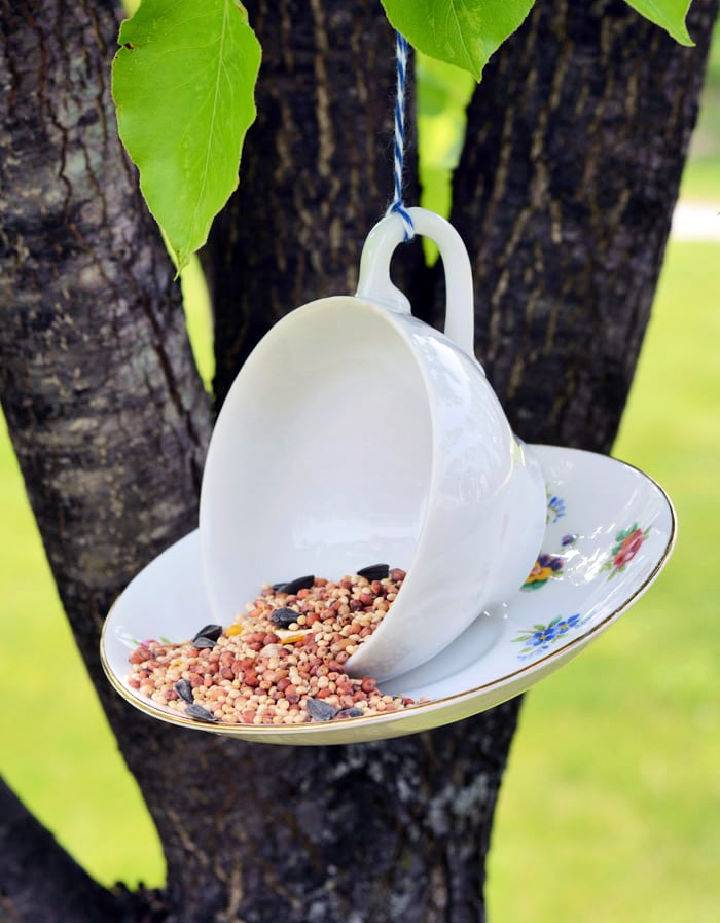
Make your garden a bird paradise with a charming DIY teacup bird feeder. This project is perfect for upcycling mismatched or vintage teacups. With a few simple materials, such as a teacup with a saucer, adhesive, and some string, you can make a delightful feeding station for your feathered friends. It's not only a fun craft activity but also an engaging way to watch and help local wildlife. For a detailed guide and more creative ideas, visit Easy Peasy and Fun. Happy crafting and bird-watching!
10. Building a Cardinal Bird Feeder
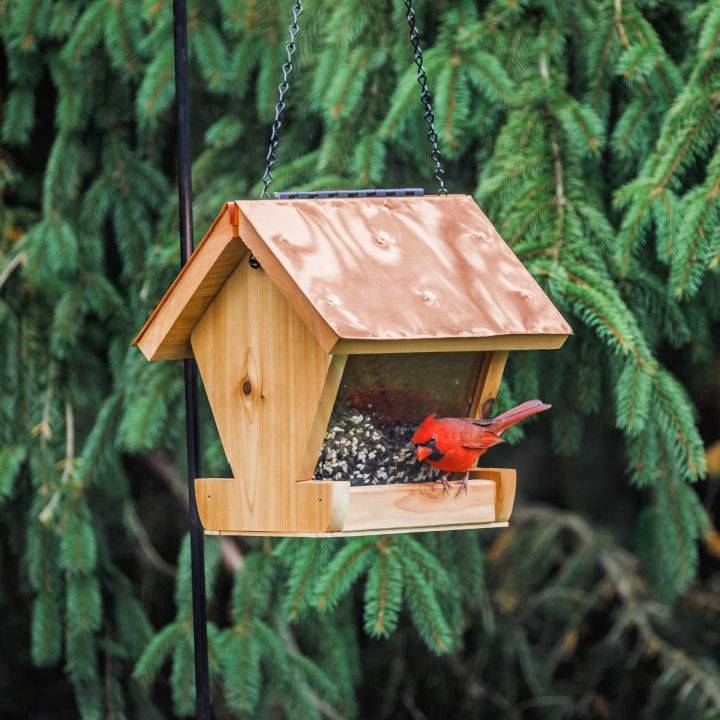
Assemble a DIY bird feeder with ease by following this straightforward guide from Family Handyman. Perfect for anyone looking to enjoy the beauty of birds year-round, this beginner-friendly project can be completed in a day for $75 - $100.
Utilizing materials like cedar board, copper sheeting, and glass panes, you'll build a durable feeder. Not only does this project help the environment by supporting bird populations, but it also provides endless backyard entertainment. Join in the fun of crafting a bird feeder that's both functional and enjoyable.
11. Easy DIY Natural Bird Feeder for Beginners
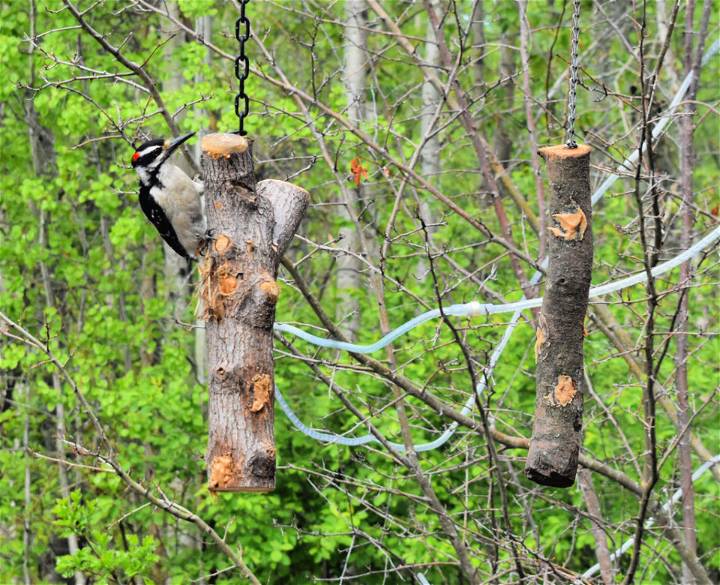
Explore the secrets of drawing melodious birds to your backyard by crafting a budget-friendly, DIY natural bird feeder. With simple tools and materials such as a log, a screw, a chain, and a drill, you can make a haven for Woodpeckers, Chickadees, Nuthatches, and Jays with this engaging project.
Fill the feeder with peanut butter and watch as your garden transforms into a lively bird sanctuary. Perfect for creative hands and nature lovers, follow the steps outlined by NAIT Nugget for an easy, helpful guide to making feathered friends.
12. Platform Bird Feeder From Repurposed Pot Lids
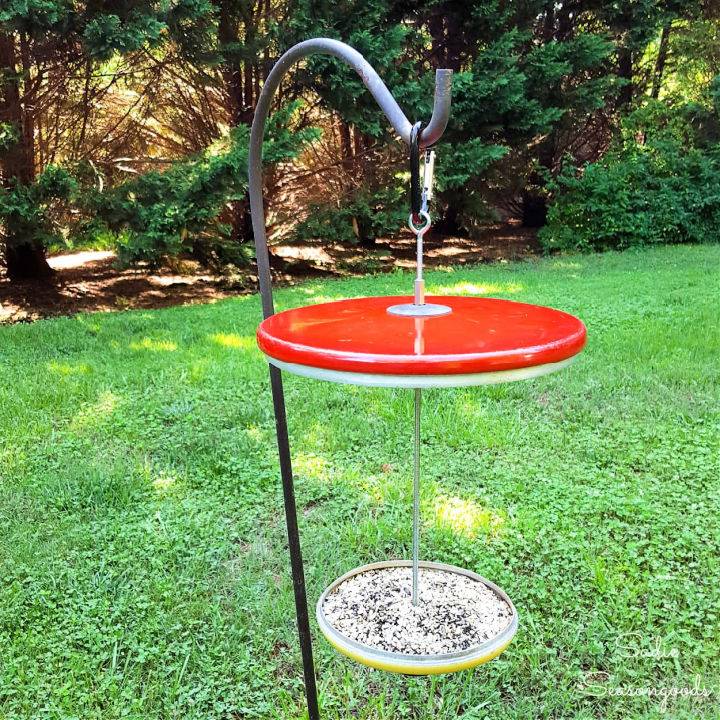
Make a one-of-a-kind DIY bird feeder using old pot lids. A visit to a thrift store sparked an inventive project to build a platform bird feeder, perfect for adding charm to any backyard. Gathering a few hardware items and employing some creativity transforms mismatched pot lids into a stylish and functional feeder.
This DIY project not only offers a sustainable option by reusing materials but also provides a sturdy and easy-to-clean source of food for small birds. For a step-by-step guide on how to bring this clever idea to life, check out Sadie Seasongoods. Whether you're an avid bird watcher or seeking an eco-friendly craft, this platform bird feeder is a delightful addition to any outdoor space.
13. Seed Mosaic Bird Feeder Using Cardboard
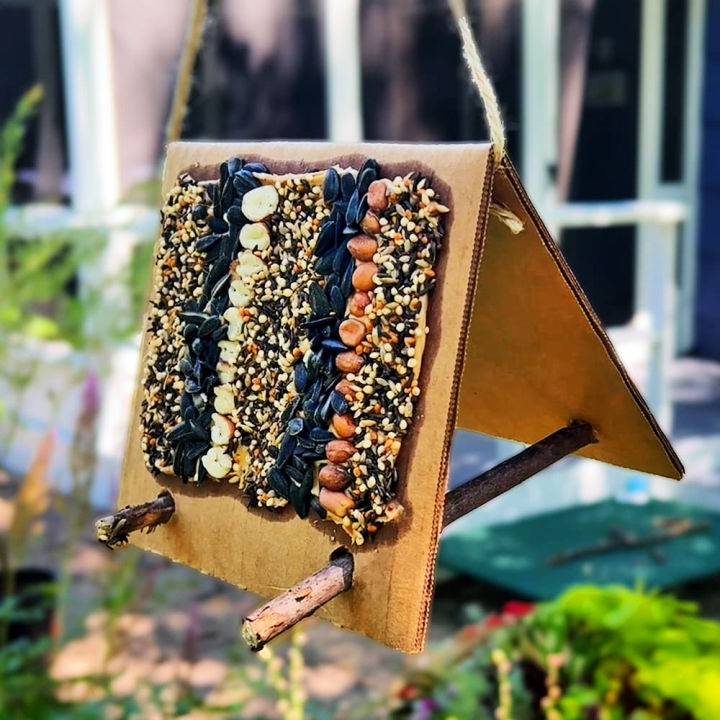
Explore easy DIY bird feeder ideas that are quick to make and loved by birds everywhere. Make an engaging DIY seed mosaic bird feeder with your children by following a simple guide at Barley & Birch. This eco-friendly activity is not only fun but also helps in attracting various bird species to your backyard, making it a lively place.
Enjoy crafting with everyday items such as scrap cardboard and natural nut butter, and watch as your garden becomes a favorite spot for local birds. Perfect for hands-on learning and play, this project also teaches kids about the importance of caring for our feathered friends.
14. Wine Bottle Bird Feeder Building Plan
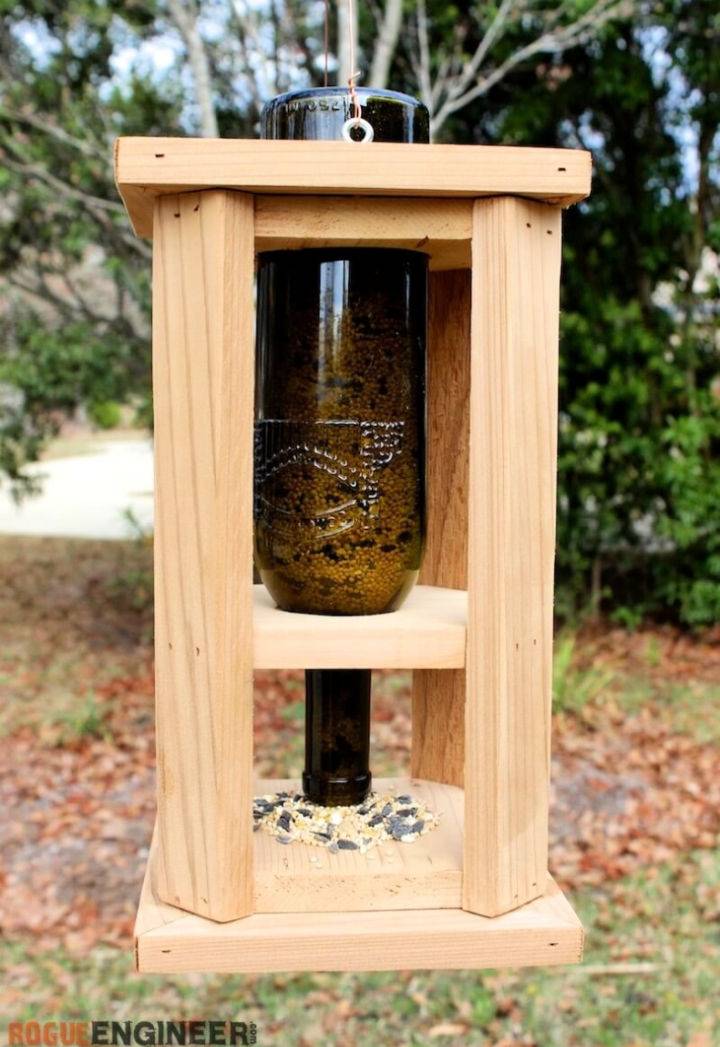
Transform your outdoor space into a whimsical haven for your feathered friends with a unique DIY wine bottle bird feeder. Courtesy of Rogue Engineer, these free plans guide you through making a charming bird feeder with simple materials like cedar boards and an empty wine bottle.
It's an engaging and straightforward project, perfect for enhancing your backyard and inviting nature closer to home. Ideal for DIY enthusiasts looking for a fun and practical weekend project, this bird feeder not only decorates your space but also supports local wildlife.
15. Homemade Colorblock Bird Feeder
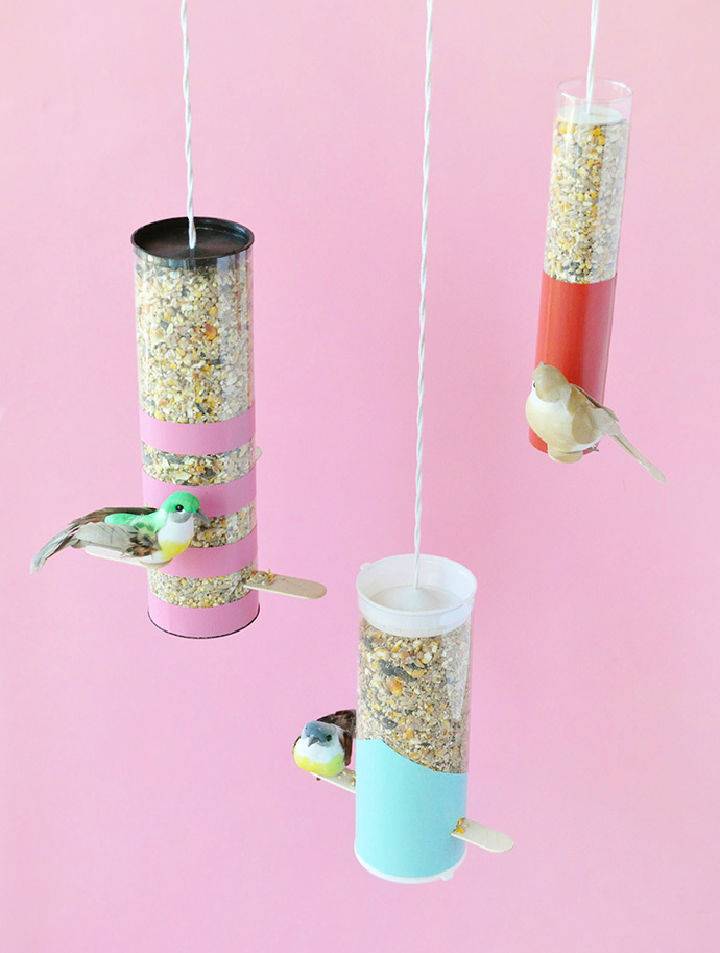
Brighten up your garden and support your feathered friends with a fun and creative project from Handmade Charlotte. Learn to craft your own DIY color block bird feeders using simple materials like acrylic paint, clear plastic tubes, and common household items. These easy-to-follow steps will guide you through making a vibrant addition to your outdoor space, perfect for attracting birds and adding a splash of color.
No worries about the elements; the recommended paint is weatherproof, ensuring your bird feeder stays bright and chip-free. Start this engaging and helpful project today for a lively and bird-friendly garden tomorrow. Happy crafting!
16. Large DIY Rustic Two Tier Bird Feeder
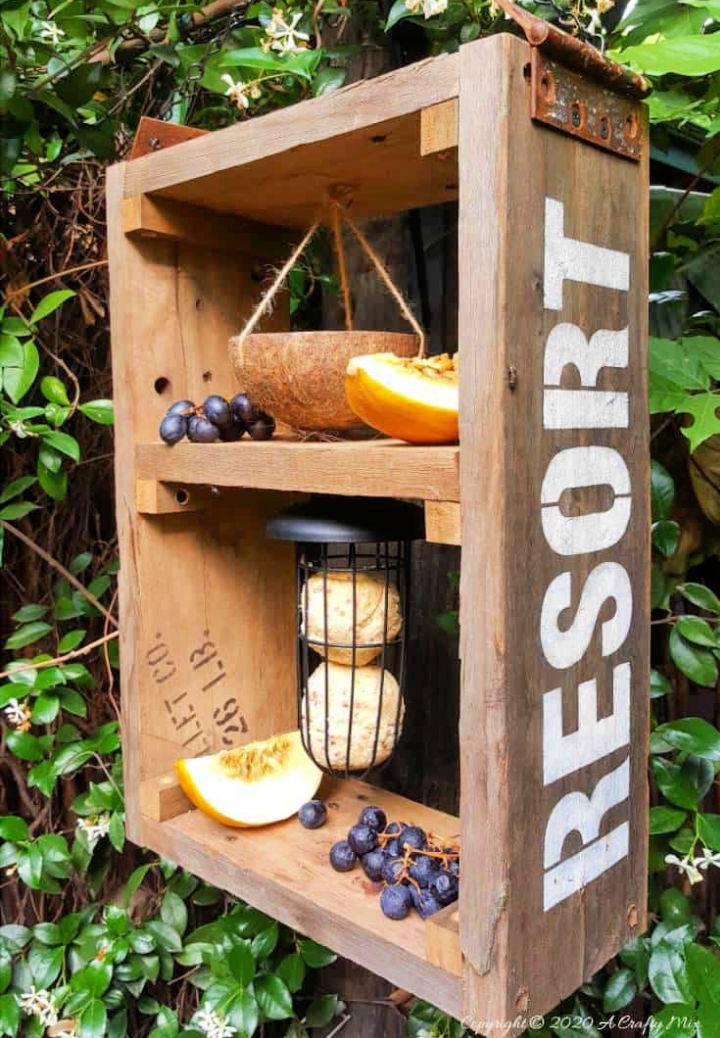
Bring the charm of nature closer to your home with a homemade easy DIY rustic two-tier bird feeder. This project is perfect for making a welcoming spot for a variety of birds to feast and frolic. Using simple tools and materials like untreated wood, a jigsaw, a sander, and a few other supplies, you'll be able to craft a feeding haven that's both functional and aesthetically pleasing.
The addition of a coconut husk as the seed bowl adds a unique touch, making it eco-friendly and stylish. Whether you're a craft enthusiast or someone who simply loves birds, this project promises to enrich your garden and bring joy to your home. For a detailed guide on how to make this feeder, visit acraftymix.com.
17. DIY Bird Feeder for Under $5
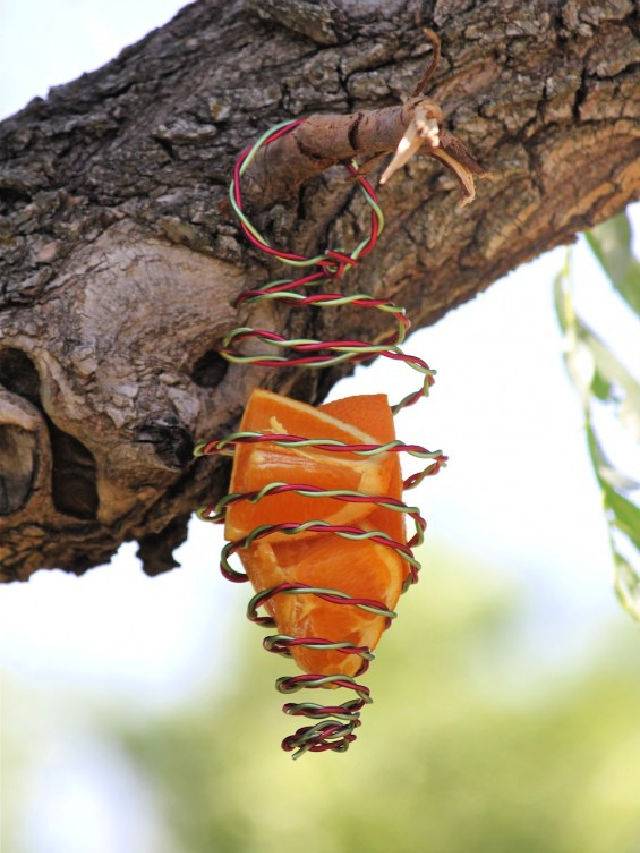
Start a new project by building bird feeders that are both functional and decorative for your outdoor space. Learn how to welcome colorful Orioles into your garden with a homemade bird feeder that's not only simple to make but also gentle on your wallet. With spring in full bloom, A Cowboy's Wife shares an engaging and easy-to-follow guide for crafting a delightful bird feeder for less than $5.
Ideal for bird enthusiasts or as a thoughtful, handmade gift for Mother's Day, this project requires only a few basic materials like floral wire and fruit. Follow this instructive DIY tutorial today, and enrich your outdoor space with the cheerful presence of birds.
18. Making Your Own Bird Feeder
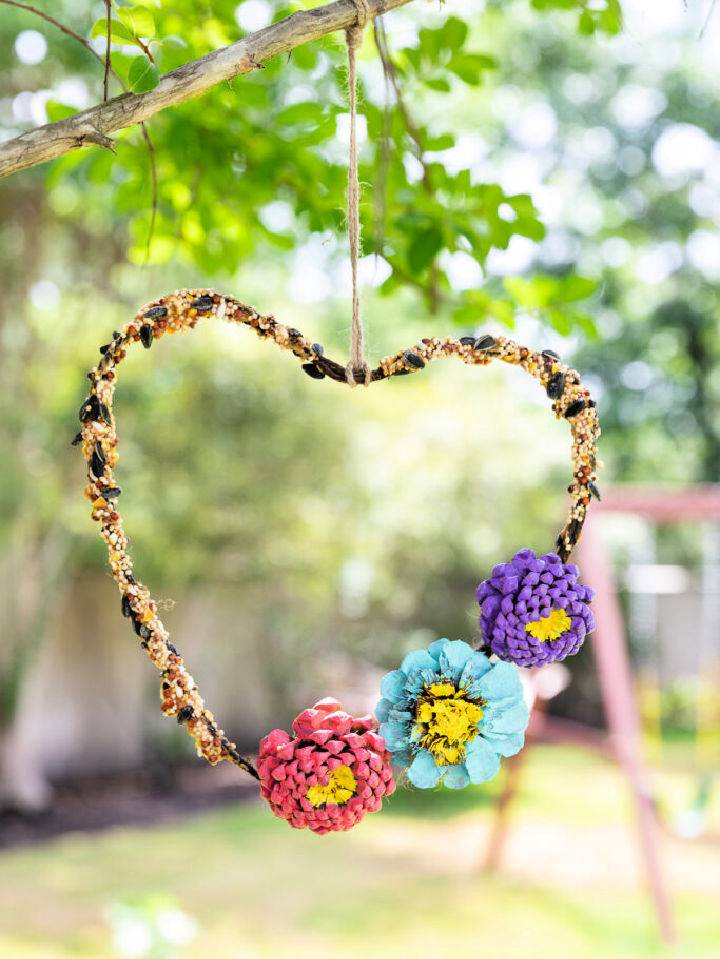
Feed your feathered friends with a unique and easy DIY bird feeder tutorial. It's a fantastic way to blend fun with nature as kids explore their artistic side by painting pinecone "flowers" and assembling a delightful treat for our feathered friends.
The project requires some adult guidance but primarily allows kids to shine, nourishing both their creativity and the birds in your backyard. It's a simple, engaging, and joyful way to spend quality time together outdoors. Perfect for battling summer boredom, this craft promises a whirl of colors, textures, and excitement, culminating in the joyous sight of birds flocking to your homemade feeders.
19. Modern DIY Scrap Wood Bird Feeder
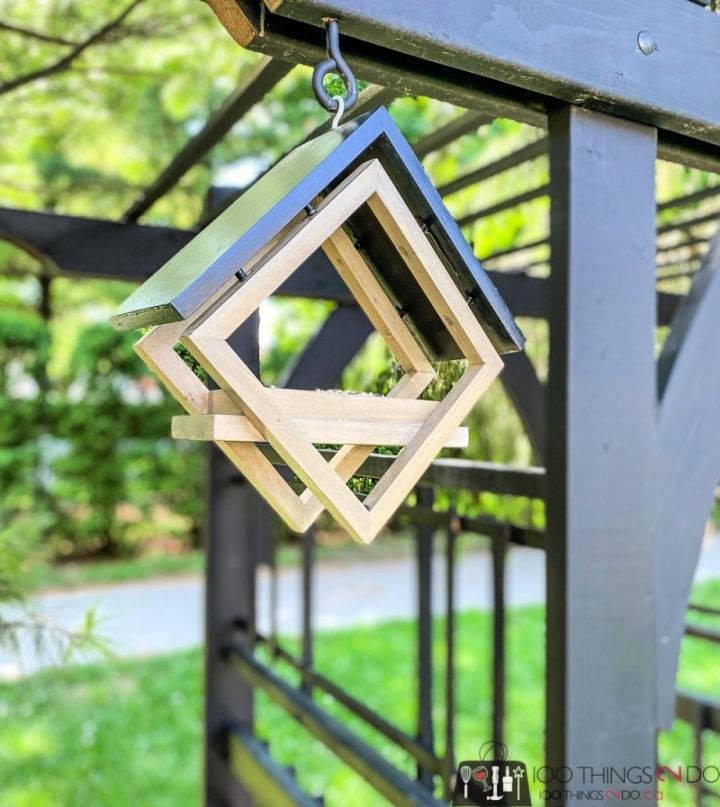
Craft a stylish haven for your feathered friends with this modern DIY bird feeder project, a fun endeavor straight from the pages of 100things2do.ca. Perfect for using up those extra pieces of scrap wood, the project guides you through making a sleek design that balances effortlessly between form and function.
With detailed free plans, say goodbye to guessing and hello to a bird feeder that not only looks fantastic but also serves as a lively gathering spot for birds. Tailor-made for DIY enthusiasts, this wooden feeder is simple, yet requires a keen eye for symmetry, ensuring a result that's as rewarding to make as it is for the birds to visit.
20. Cute Bird Feeder From Recycled Materials
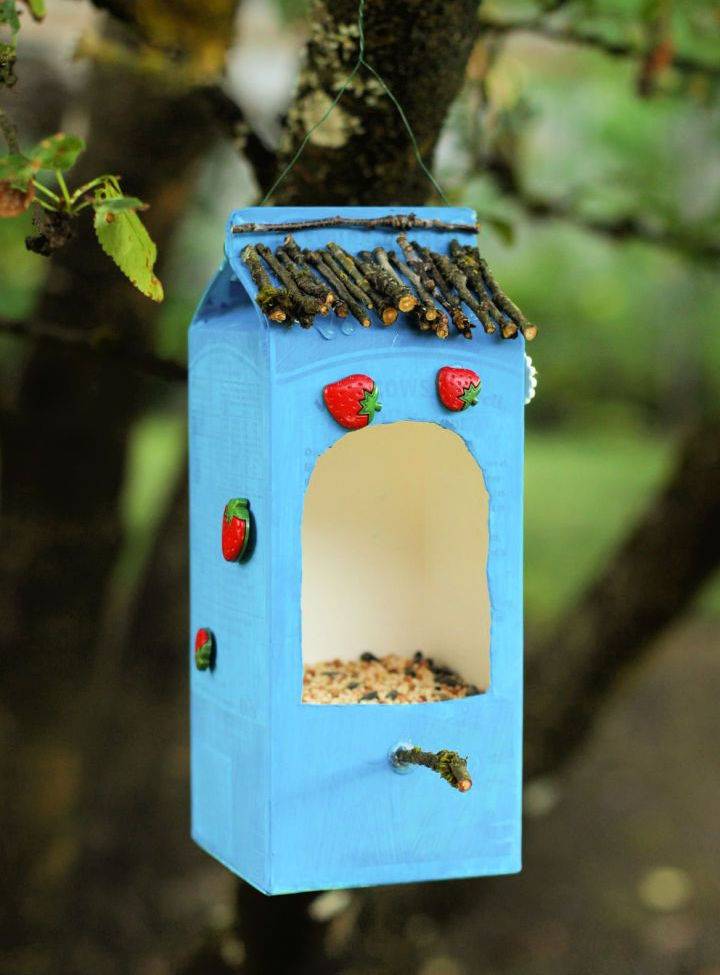
With this DIY bird feeder, you can welcome more birds into your backyard by repurposing empty milk cartons. This quick and easy project is especially fun for kids and parents or grandparents to do together.
Just choose a paint color and glue on whatever craft or natural materials fit your vision. The result will be a charming yard decoration that provides a good food source for your avian visitors. For a detailed guide on making your bird feeder from recycled materials, visit Audubon.
21. DIY Dollar Tree Bird Feeder
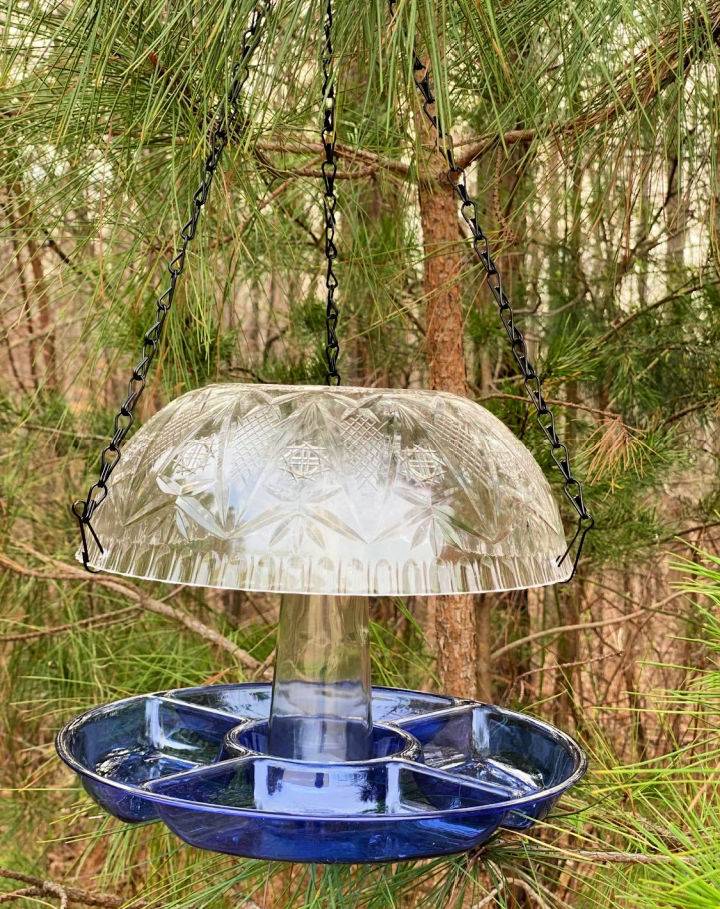
Join the trend of making bird feeders with materials you already have at home for a sustainable hobby. Make a charming haven for feathered friends with a DIY bird feeder or bath using affordable finds from Dollar Tree. The Shabby Tree guides you through crafting this delightful addition to your yard with simple materials like a plastic bowl, chip tray, and a glass vase, all secured with durable E6000 glue. Perfect for hanging in your garden, this $4 project is an easy way to bring nature closer. Gear up with a drill and get ready to assemble a piece that birds will love.
22. DIY Oriole Bird Feeder Using Oranges
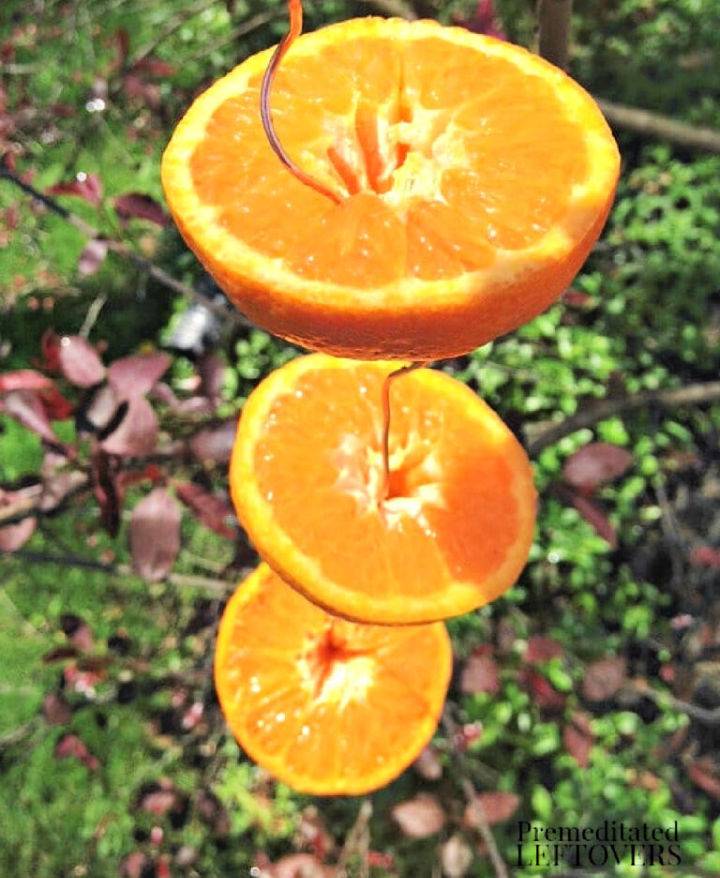
Enhance your garden by attracting vibrant orioles with a homemade Oriole bird feeder crafted from oranges and wire. Building a welcoming haven for these stunning birds is simpler than you might think. With a quick DIY guide on how to make an Oriole Bird Feeder, you'll need just a handful of materials like medium-strength wire, wire cutters, a knife, and, of course, oranges.
This project is not only straightforward but also a delightful opportunity to watch orioles flock to your outdoor space. Get started today and soon your garden will become a favorite spot for these beautiful birds.
23. Toilet Paper Tube Bird Feeder Craft
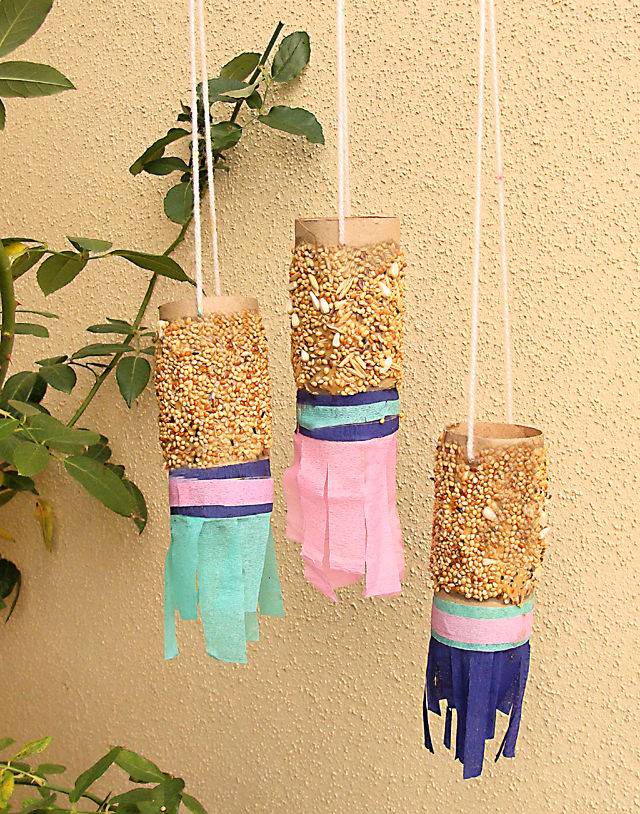
Get inspired by these simple bird feeder ideas perfect for beginners looking to help their feathered friends. Bring joy to your feathered friends and engage in a fun, eco-friendly activity by making your toilet paper roll bird feeder. Ideal for a quick and creative craft, this project allows kids to participate and learn about nature. For detailed instructions and what you'll need, visit Creative Jewish Mom.
From gathering simple supplies like toilet paper tubes, peanut butter, and birdseed to the final step of hanging your creation, this guide makes it easy to contribute to bird welfare delightfully. Perfect for a last-minute craft without the mess, this bird feeder project promises fun and fulfillment.
24. Building Your Own Bird Feeder
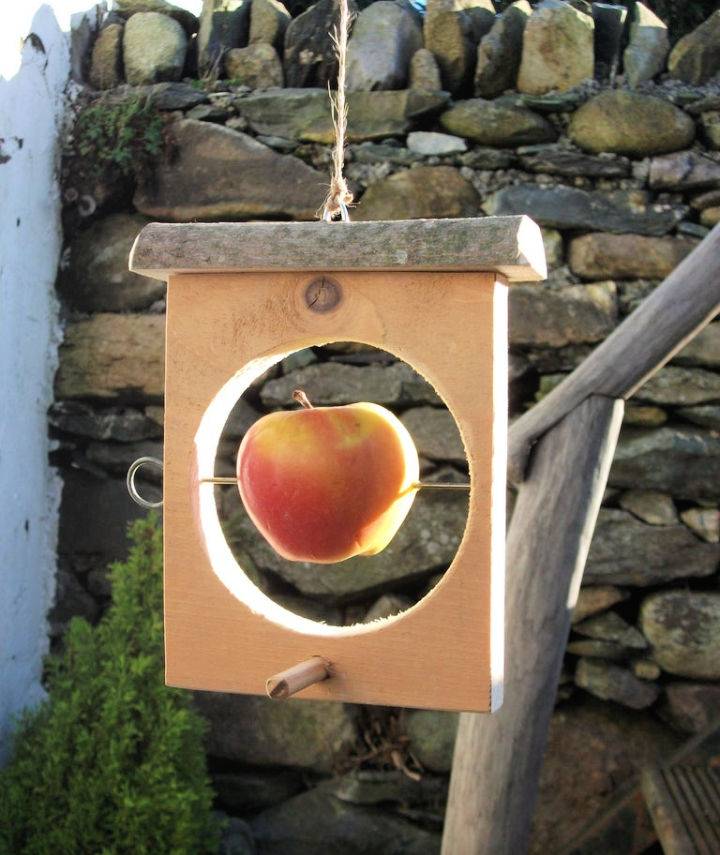
Invite birds to your garden by crafting your bird feeder with step-by-step DIY instructions available at Instructables. This simple guide is perfect for anyone looking to bring more wildlife into their outdoor space. You'll learn how to make a feeder using materials you likely already have at home. Engage in this enjoyable project and enjoy the sight of birds flocking to your garden. It's an easy, fulfilling way to connect with nature right at your doorstep.
25. Unique DIY Acorn Bird Feeder
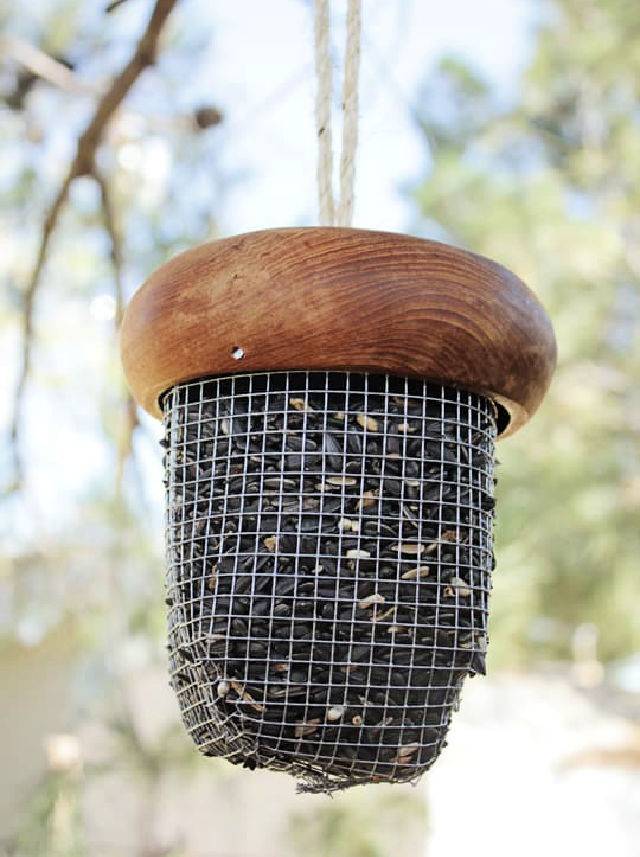
Learn how to make a charming acorn bird feeder with this helpful tutorial. Perfect for crafters of all levels, this DIY guide breaks down the process into easy-to-follow steps. All you need are some basic materials like 1/4" metal mesh, a round wooden bowl, a sisal rope, small nails, and a few tools.
Whether you're enhancing your backyard or crafting a unique gift, this acorn bird feeder is both functional and appealing. Follow along to craft a special spot where your local birds can gather and feast this winter.
26. Simple Backyard Bird Feeder Ideas
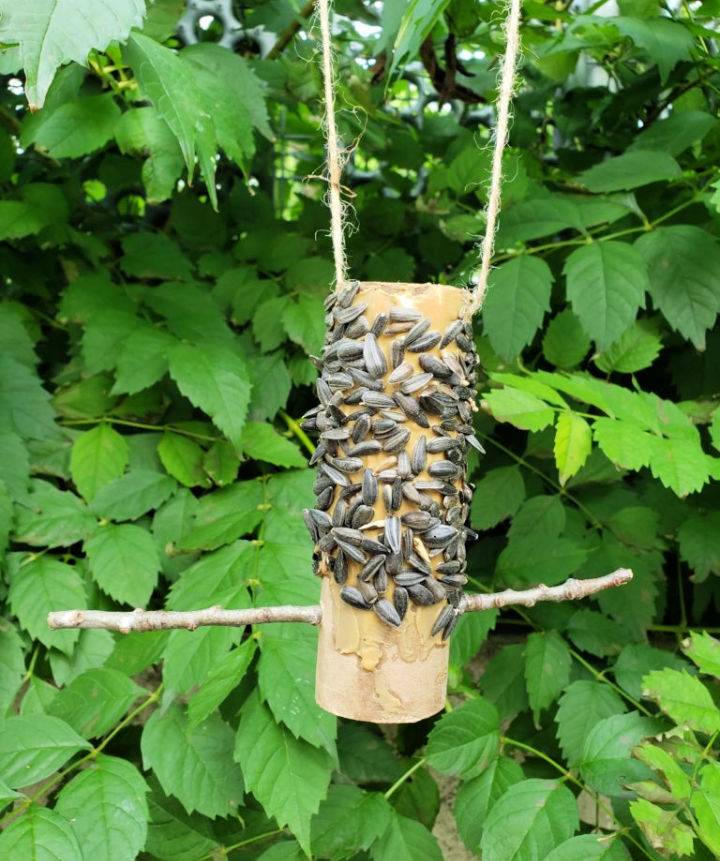
Unlock a variety of DIY bird feeder ideas that blend creativity with nature conservation effortlessly. Fuel your creativity and help local wildlife with a fun DIY bird feeder crafted from everyday items, courtesy of the Daniel Boone Regional Library. This easy-to-follow guide lets you transform a simple cardboard tube into a bird-friendly diner, using only a few household supplies.
Perfect for nature lovers of all ages, it's a wonderful way to connect with the natural world right in your backyard. Additionally, explore fascinating bird books and learn bird calls with educational resources from the library. Engage in this enjoyable activity and contribute to your Summer Reading goals!
27. Cool Bird Feeder House With 1 Board
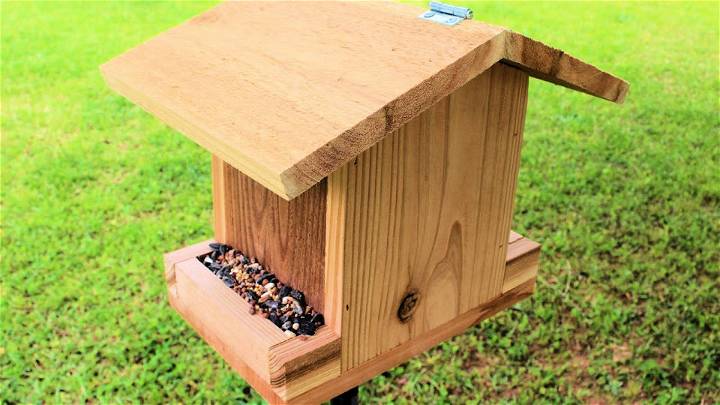
Make a charming bird feeder from just a single board with a simple DIY approach. Watch the tutorial on YouTube, offering step-by-step instructions that anyone can follow. This project is perfect for adding a complementary piece to your garden, inviting a variety of birds, and bringing life to your outdoor space.
Crafted from cedar, it's designed to withstand the elements, ensuring your feathered friends enjoy their meals in style. This guide makes building a bird feeder both easy and engaging, fostering a connection with nature right in your backyard.
28. PVC Pipe Dove Feeder Design
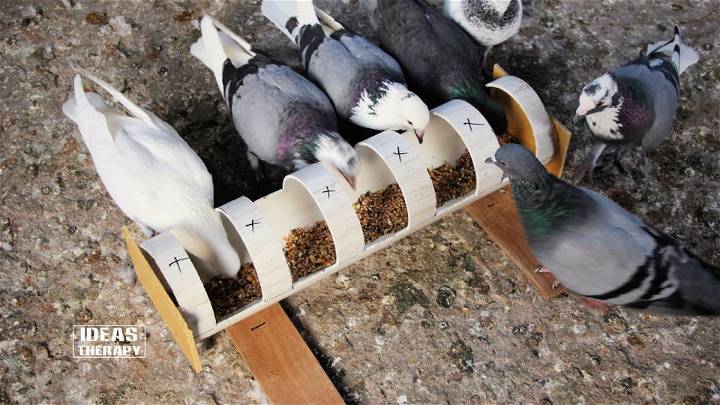
Discover how to make a simple DIY bird feeder using PVC pipe with straightforward instructions from Ideas Therapy. This easy-to-follow guide is perfect for anyone looking to add a touch of wildlife hospitality to their garden. Enjoy crafting this practical project that not only feeds the birds but also adds an interesting element to your outdoor space. Perfect for DIY enthusiasts seeking a manageable project with big rewards.
29. DIY Bird Feeding Station at Home
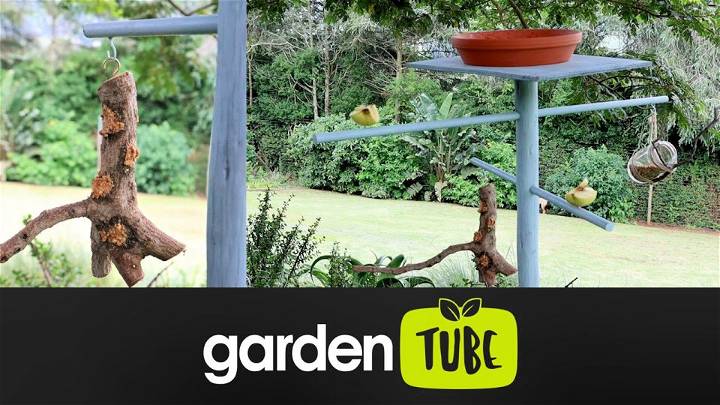
Make beautiful homemade bird feeder ideas that will make your garden the go-to spot for birds. Bring birds into your garden with a homemade DIY bird feeding station. Watch this tutorial to learn how to make one. It's simple and fun. You will need a 16 mm spade drill bit, 100 grit sandpaper, a few nails, and some paint.
Decorate it as you wish and finish with a UV-resistant sealer. Don't forget the peanut butter and birdseed mix for a tasty bird treat. Place your station in a shaded spot and enjoy the company of feathered friends. It's an easy and engaging project for all.
30. DIY Bird Feeder With Details Instructions
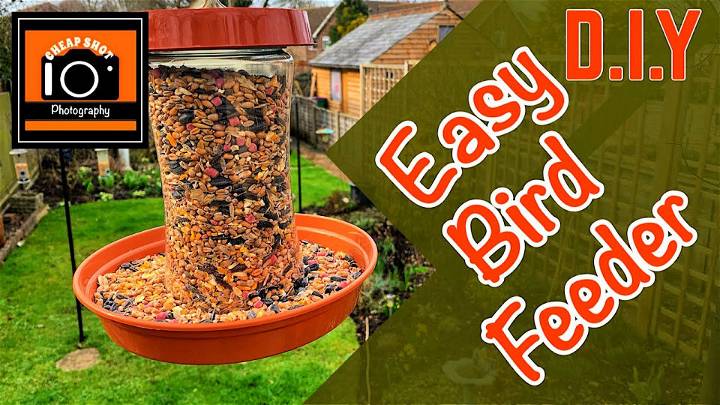
Learn how to craft easy homemade bird feeders that are fun to make and great for bird watching. Attract an array of colorful birds to your garden with an easy-to-make D.I.Y bird feeder. This engaging video tutorial on YouTube guides you through making a simple feeder using upcycled materials.
Learn how to clean and prepare containers, cut feeding holes, and assemble with drainage for weather resilience. This helpful project not only beautifies your garden but also provides a sustainable solution for bird enthusiasts. Perfect for all, this feeder promises to bring nature closer to home.
Conclusion:
In conclusion, crafting your own DIY bird feeder is not only a rewarding endeavor but also an excellent way to support our feathered friends. From selecting the perfect materials to following a step-by-step guide, and ensuring the safety and cleanliness of the feeders, our guide on 30 homemade DIY bird feeder ideas has covered all you need to make a welcoming space for birds.
As we've explored innovative ways to repurpose household items and ensure the feeder's durability and attractiveness, it's clear that making a bird feeder can be a simple, enjoyable, and impactful project. So, get creative, follow our tips, and you'll soon have a bustling hub of bird activity right in your own backyard.


